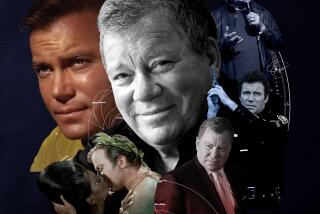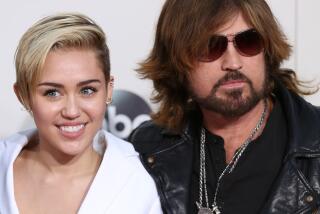Fame and Billy Childs Finally Meeting
- Share via
Svelte, bespectacled Billy Childs sits in a Thai restaurant in Hollywood, assessing his 16-year career as a jazz player.
“It’s goin’ pretty good. It’s creepin’ up,” says the contemporary pianist-composer, his voice revealing a slight hint of optimism.
Indeed it is. His recent Windham Hill Jazz Records release, “Portrait of a Player,” has sold more than 13,500 copies, about double the sale of any of his previous three albums. He’s traveling more, heading in July to the Netherlands for the North Sea Jazz Festival, and then on to Montreal for the jazz festival there later that month. And in August, he makes his most important debut of the year when he plays New York’s hallowed Village Vanguard. That weeklong engagement will dramatically boost Childs’ visibility.
“Playing in New York has a good benefit because it gives you more substance in a visual sense,” Childs explains. “It makes me more credible as a jazz musician. If I do well there, I’ll work more.”
This recent burst of activity aside, it’s been a long creep, says Childs--who leads a quintet at Catalina Bar & Grill in Hollywood tonight and Saturday. As little as a year ago, Childs maintains, people regularly asked the question “Who’s Billy Childs?” when his name was mentioned in a musical context and he found it hard to get work out of town. This despite his tenure with trumpet great Freddie Hubbard and three albums as a leader.
“That was incredibly frustrating,” he says.
Many would say the 36-year-old Childs has deserved better.
A first-class pianist deeply influenced by Herbie Hancock and McCoy Tyner, he’s an articulate improviser whose solos range from the tuneful to the tempestuous. He’s also a compelling composer whose jazz pieces can be melodic enough to be singable, but can also border on the explosive and the enigmatic, reflecting his compositional influences: Hancock, Arthur Honegger, Paul Hindemith and Duke Ellington.
Childs has received increased exposure from “Portrait of a Player,” a piano-bass-drums trio session where he plays mostly standards, and the focus is on his piano playing rather than his compositions.
“The conforming nature of this album has helped,” he says, noting that the Village Vanguard gig came on the basis of the recording. But Childs admits he paid a price for the acclaim he’s now receiving.
“I hate conformity,” he says, his voice turning steely. “I think the spirit of jazz gets lost when you conform to what everyone else is doing.”
Did Childs make the album simply to get his name out to a larger audience? The answer is yes. “The album wasn’t my idea,” he says without flinching, stating that he gave it a good shot, and tried to make the performances unique. Still, he admits that his two previous albums--”His April Touch” or “Twilight Is Upon Us”--”are more of where I’m at. There I have tried to take different elements, including jazz, classical, rock and R&B; and put them into one organic form of music.”
That sort of organic music, but in the serious realm, is how one might describe the bombastic, enthralling “Tone Poem for Holly”--a 10-minute work commissioned by the Los Angeles Philharmonic from Childs, who graduated from USC with a degree in composition in 1979. The piece was performed by the Philharmonic in a concert earlier this year at St. John’s Episcopal Church in Los Angeles with Esa-Pekka Salonen conducting.
With four albums out, dates in Europe and in New York on the horizon, a piece played by the Philharmonic--one still wonders why has it taken so long for the unquestionably talented Childs to achieve a degree of semi-prominence?
Reasons are plentiful, he feels. But foremost in his mind is his decision to remain in Los Angeles, rather than move to New York, with its more active jazz scene.
He grew up here, took a few piano lessons at age 6, but then quit. Then in 1971, inspired by the group Emerson, Lake and Palmer, he returned to playing. A graduate of Hamilton High, he entered USC in 1975, started his tenure with Hubbard with occasional dates in 1978, and then stayed in Los Angeles to establish himself as one of the town’s finest young jazz artists.
Childs’ contract with Windham Hill Jazz calls for one more album, and he’s torn between doing another straight-ahead session with horns, or a more electronic record, doing originals in the flavor of such early fusion bands as Return to Forever or Weather Report.
Chances are no matter which record he makes, and where he plays, people won’t be asking “Who’s Billy Childs?” much longer.
More to Read
The biggest entertainment stories
Get our big stories about Hollywood, film, television, music, arts, culture and more right in your inbox as soon as they publish.
You may occasionally receive promotional content from the Los Angeles Times.










